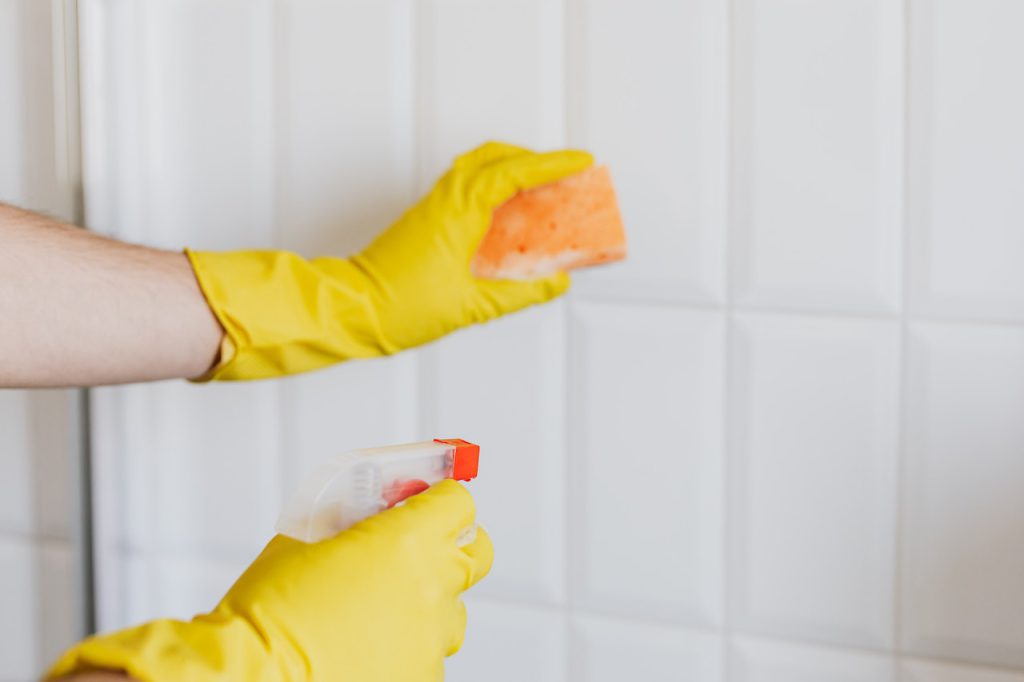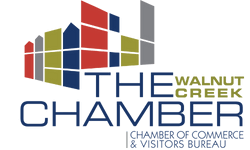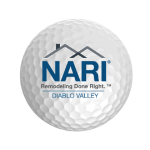Mold, a form of fungus thriving in environments characterized by high humidity and dampness, poses significant health hazards. Its reproductive mechanism involves the release of spores into the air, subsequently settling on surfaces where they initiate growth. In residences with aging infrastructures, where moisture and leaks are more likely, the presence of mold becomes particularly worrisome.
Various molds can infiltrate indoor spaces, with notable examples including Aspergillus, Penicillium, and Stachybotrys. These molds exhibit rapid reproduction, especially on organic substrates present in building materials like wood and drywall. The porous nature of these materials creates an optimal breeding ground for mold spores, facilitating their proliferation.
The imperative to address mold issues cannot be overstated, given the inherent risks they pose to health and the overall safety of living spaces. To navigate these concerns, a comprehensive checklist has been compiled, detailing effective strategies for identifying and rectifying mold problems in older homes. By diligently adhering to these guidelines and adopting proactive measures, individuals can safeguard their well-being and that of their loved ones, fostering a healthier living environment.
The checklist encompasses a multifaceted approach, beginning with thorough inspections to detect hidden mold growth. Ventilation improvements and moisture control measures are then recommended to curb the conditions conducive to mold development. Simultaneously, addressing water leaks, repairing damaged structures, and employing mold-resistant materials are integral steps in preventing recurrence.
Regular cleaning and maintenance routines, coupled with prompt remediation efforts, constitute additional pillars of a proactive mold management strategy. By embracing these measures, homeowners can not only mitigate health risks associated with mold exposure but also ensure the longevity and safety of their living spaces. Ultimately, this comprehensive guide serves as a valuable resource for those navigating the complexities of mold-related concerns in older homes.
Table of Contents
ToggleOverview of Mold Growth in Homes
Mold proliferation is a prevalent issue often encountered in older residences, manifesting on diverse surfaces like walls, ceilings, carpets, and furniture. The primary catalyst for mold development within homes is moisture. Instances of leaks, condensation, or elevated humidity levels create optimal conditions for the flourishing of mold.
Mold Growth
The term “mold growth” pertains to the expansion and dissemination of mold within a household. This can manifest either visibly or invisibly. Observable mold growth is readily identifiable, presenting as discolored patches on surfaces. However, indoor mold can also proliferate unseen behind walls or beneath flooring.
Factors Influencing Mold Growth
Numerous factors contribute to mold proliferation in older homes:
- Moisture: Mold necessitates moisture for growth. Leakage from pipes or roofs, condensation from windows or appliances, and elevated humidity levels provide the requisite moisture for mold spores to sprout and multiply.
- Poor Ventilation: Inadequate ventilation confines excess moisture indoors, establishing an environment conducive to mold growth.
- Lack of Insulation: Insufficient insulation in older homes can lead to temperature fluctuations and condensation issues, fostering mold growth.
- Water Damage: Unaddressed incidents of water damage can result in persistent moisture problems, fostering ongoing mold growth.
- Damp Basements: Basements, owing to their proximity to the ground and limited airflow, are prone to dampness. Without proper ventilation or waterproofing, they become susceptible areas for mold growth.
Health Risks Tied to Mold Exposure
Exposure to indoor molds poses health risks for occupants:
- Respiratory Issues: Mold spores released into the air can elicit allergies and respiratory problems such as coughing, sneezing, wheezing, and asthma attacks.
- Skin, Eyes, and Throat Irritation: Direct contact with mold or inhalation of mold spores can lead to irritation of the skin, eyes, and throat.
- Exacerbation of Existing Conditions: Individuals with pre-existing respiratory conditions or compromised immune systems may experience more severe symptoms when exposed to mold.
- Mycotoxins: certain molds produce mycotoxins, toxic substances with adverse effects on human health if ingested or inhaled over an extended period.
Addressing Mold-Related Health Risks in Older Homes
To mitigate health risks associated with mold growth in older homes, proactive measures are imperative:
- Identify and Rectify Moisture Issues: Regularly inspect the home for signs of leaks, condensation, or high humidity. Promptly address these concerns by fixing leaks, enhancing ventilation, and utilizing dehumidifiers if needed.
- Remove Visible Mold: Properly eliminate visible mold on surfaces by wearing protective gear. Clean affected areas with a water and detergent solution or commercial mold cleaners.
- Enhance Ventilation: Ensure adequate airflow throughout the home by regularly opening windows, utilizing exhaust fans in bathrooms and kitchens, and installing vents in moisture-prone areas like basements.
- Control Indoor Humidity: Maintain indoor humidity levels below 50% to discourage mold growth. Use air conditioners or dehumidifiers during humid weather.
- Regularly Inspect Damp Areas: Routinely examine moisture-prone areas like basements, crawl spaces, attics, and bathrooms for signs of mold growth or moisture issues. Promptly address these concerns to prevent further mold development.
It is possible to reduce the health concerns linked with mold growth in older homes by following these guidelines and taking proactive measures to manage moisture issues.
Mold Remediation: Personal Protective Equipment and Methods
Effectively addressing mold in older homes requires careful consideration of safety measures and efficient techniques. This section emphasizes the significance of employing personal protective equipment (PPE) and adopting appropriate cleaning methods to mitigate health risks associated with mold.
Protective Attire: Gloves, Goggles, and Masks
Ensuring your safety during mold cleanup hinges on wearing the right protective gear. Consider the following essential items:
- Gloves: Utilize disposable latex or nitrile gloves to shield your hands from direct contact with mold and cleaning solutions.
- Goggles: Safeguard your eyes from potential splashes or airborne spores by wearing goggles or safety glasses.
- Masks: Prioritize respiratory protection by donning a mask, with N95 respirators being a common recommendation for guarding against mold spores.
Containment Strategies: Minimizing Mold Spore Dispersal
Effective containment measures are pivotal in preventing the spread of mold spores during cleanup. Take the following actions:
- Isolate the Area: Seal off the affected space by using plastic sheeting or tape on doors, windows, and other openings.
- Negative Pressure Setup: Employ fans or air scrubbers with HEPA filters to establish negative pressure within the containment area, preventing spores from escaping.
- HVAC Vent Coverage: Seal HVAC vents in the affected area to avoid cross-contamination through the ventilation system.
Proper Cleaning Protocols: Detergent Solutions and Mold Cleaners
Implementing correct techniques is crucial for successful mold removal. Consider the following recommended approaches:
- Detergent Solutions: For non-porous surfaces like tiles or glass, use detergent solutions mixed with water. Scrub the affected area thoroughly and rinse with clean water.
- Specialized Mold Cleaners: Some situations may necessitate specialized mold cleaners, especially for porous surfaces like drywall or wood. These cleaners are formulated to penetrate materials and effectively eliminate mold.
Chlorine Bleach: Advantages and Disadvantages
While chlorine bleach is a commonly used substance for mold cleanup, understanding its pros and cons is vital:
Pros:
- Effectively kills surface mold on non-porous materials.
- Readily available and affordable in most households.
Cons:
- Unsuitable for porous materials as they cannot penetrate deeply.
- Inhalation of bleach fumes can be harmful, necessitating proper ventilation during use.
Biocides: An Alternative Approach
Biocides, chemicals designed to kill or inhibit mold growth, offer an alternative option. Consider the following points:
Effectiveness: Biocides can be effective in killing mold spores, with efficacy varying based on the specific product used.
Safety Precautions: Adhere to the manufacturer’s instructions when using biocides, as mishandling can be hazardous.
Considerations: Biocides should complement the physical removal of visible mold growth and should not be solely relied upon for complete remediation.
Guidelines for Mold Remediation: Determining the Right Time to Engage Professional Assistance
Upon discovering mold in your older home, it is crucial to promptly address the issue. While certain instances of mold can be managed with do-it-yourself methods, there are scenarios where engaging professional assistance becomes imperative. The following guidelines assist in determining when it’s time to enlist a professional for mold remediation.
1. Larger Area or Concealed Molds
If the affected area exceeds 10 square feet or if molds are concealed within walls or HVAC systems, professional remediation may be essential. Extensive mold growth demands specialized knowledge and equipment possessed by professionals, enabling them to assess the problem’s extent and develop an effective removal plan.
2. Expertise and Equipment
Professionals possess the expertise and equipment necessary for thorough mold removal without causing further contamination. Their understanding of different mold types allows them to identify potential risks associated with specific species, enabling the implementation of appropriate strategies for safe mold elimination.
3. Proper Containment Measures
Engaging a professional ensures the implementation of proper containment measures during remediation. Containment is critical to prevent the release of spores into the air, which could exacerbate health issues and spread mold to other areas. Professionals use techniques such as negative air pressure machines, plastic sheeting, and sealing off affected areas to prevent cross-contamination.
4. Health Risks
Mold exposure can pose health risks, with some individuals experiencing mild symptoms and others facing more severe consequences, especially those with respiratory conditions. If persistent respiratory problems or allergic reactions occur indoors, consulting a qualified health professional is essential to determine if mold exposure is the cause.
5. Safety Considerations
Mold remediation involves handling potentially hazardous substances, and professionals prioritize safety throughout the process. They use personal protective equipment (PPE) to minimize their exposure and prevent the spread of mold spores. Trained to follow safety protocols established by industry organizations, professionals ensure a safe remediation process.
6. Time and Efficiency
Addressing mold issues in older homes can be time-consuming, especially when dealing with extensive growth or hidden molds. Professionals bring experience to efficiently tackle the problem, minimizing disruption to daily life. Hiring a professional ensures that the remediation process is completed quickly and effectively.
7. Peace of Mind
One of the significant advantages of hiring a professional for mold remediation is the peace of mind it brings. Knowing that experts are handling the situation alleviates stress and uncertainty. Professionals utilize their knowledge, skills, and specialized equipment to thoroughly address mold problems, providing reassurance that your home will be safe and healthy once again.
Guarding Against Moisture and Mold: Strategies for Older Homes
Regularly examining older homes is essential to detect indications of leaks or water damage that might lead to the accumulation of moisture. Excessive indoor moisture provides an ideal environment for mold growth, posing significant health risks. To safeguard your home and prevent mold, consider the following crucial tips to avert moisture-related issues in older homes:
1. Inspect for Leaks and Water Damage
Regular inspections are crucial to identifying hidden leaks or water damage in older homes. Look for signs such as discolored walls, peeling paint, musty odors, or visible mold growth. Promptly address roof leaks and fix plumbing issues to prevent water damage.
2. Improve Ventilation
Adequate ventilation is key to reducing humidity levels indoors. Install exhaust fans in bathrooms and kitchens to remove excess moisture generated by cooking, showering, or bathing. Opening windows when weather permits enhances air circulation and reduces indoor humidity.
3. Use Dehumidifiers
Areas prone to dampness, like basements, are susceptible to mold growth due to high moisture levels. Use dehumidifiers in these spaces to control humidity, maintaining a relative humidity level between 30% and 50% to create an environment inhospitable to mold.
4. Properly Maintain Gutters and Downspouts
Clogged gutters can lead to water overflow, potentially causing water infiltration into the structure. Regularly clean gutters and ensure downspouts direct water away from the home’s foundation to prevent excessive moisture accumulation.
5. Seal Cracks and Gaps
Inspect the home for cracks or gaps in the foundation, walls, windows, or doors that could allow water seepage. Seal these openings with caulk or weatherstripping to prevent water intrusion and minimize the risk of mold growth.
6. Properly Insulate
Inadequate insulation can result in condensation and moisture buildup in older homes. Ensure proper insulation, especially in areas like attics and crawl spaces, to regulate temperature and reduce the likelihood of moisture formation.
7. Address Plumbing Issues
Check for leaks under sinks, around toilets, or behind appliances regularly. Repair any plumbing issues promptly to prevent ongoing moisture problems that may lead to mold growth.
8. Control Humidity Levels
Monitor indoor humidity levels regularly using a hygrometer, aiming for a range between 30% and 50%. Employ dehumidifiers or increase ventilation if humidity levels exceed this range to effectively control moisture.
9. Maintain a Dry Environment
Wipe down surfaces regularly to remove accumulated moisture or condensation. Avoid leaving wet clothes or towels indoors. Promptly clean up spills or leaks and thoroughly dry the affected area.
By adhering to these guidelines and proactively addressing potential sources of excessive moisture in older homes, you can significantly minimize the risk of mold growth and protect your health.
Revealing the Unseen: Expert Strategies for Detecting and Dealing with Hidden Mold
Concealed mold poses a discreet challenge in aging residences, manifesting itself behind walls, beneath floors, or in obscured spaces where it can persist undetected for extended periods. Various methods exist to expose this elusive adversary and proactively combat its presence.
Identification of Concealed Mold
Effectively identifying hidden mold is pivotal in addressing the issue. Consider the following methods:
- Moisture Meters: These devices gauge the moisture levels in materials like wood, drywall, or flooring. By pinpointing areas with elevated moisture content, potential locations for hidden mold growth can be identified.
- Thermal Imaging Cameras: Utilizing infrared technology, these cameras detect temperature variations on surfaces. Given mold’s propensity for damp environments, thermal imaging can reveal areas with hidden moisture, signaling potential mold presence.
- Air Sampling Tests: Involving the collection of air samples from different areas, these tests are sent to a laboratory for analysis. This method helps determine elevated levels of mold spores in the air, even when visible mold signs are absent.
Addressing Hidden Mold
Upon detecting hidden mold, prompt action is imperative to prevent further damage and health risks. Consider the following steps:
- Remediation Plan: Develop a comprehensive plan outlining specific actions required to effectively address the hidden mold issue. This plan should detail containment measures, removal techniques, and necessary safety precautions.
- Removal of Affected Materials: In some instances, eliminating hidden mold may necessitate the removal of affected materials. This could involve tearing out walls or replacing damaged flooring and insulation.
- Targeted Treatments: Depending on contamination extent and material type, employ targeted treatments such as biocides or antimicrobial solutions to eliminate mold and prevent regrowth.
- Professional Remediation: In cases of extensive hidden mold or uncertainty about the optimal course of action, seeking professional assistance is advisable. Mold remediation experts possess the knowledge and experience to handle complex situations effectively.
- Post-Remediation Verification: After completing remediation activities, conduct thorough post-remediation verification. This involves visual inspections and microbial investigations to confirm the successful removal of all hidden mold.
Significance of Addressing Hidden Mold
Addressing hidden mold in older homes is imperative for several reasons:
- Health Risks: Hidden mold can release spores into the air, triggering allergic reactions and respiratory issues. Removing hidden mold fosters a healthier living environment for occupants.
- Structural Integrity: Mold growth can compromise a home’s structural integrity over time, weakening materials and potentially leading to costly repairs if left unattended.
- Preventing Further Spread: Hidden mold has the potential to spread rapidly if not promptly addressed. Taking early action can prevent its spread to other areas and minimize further contamination.
Conclusion: The Complete Checklist for Addressing Mold Health Risks in Older Homes
Congratulations on successfully navigating through the essential sections of our blog post, equipping yourself with valuable insights into addressing mold-related health risks in older homes. Your newfound knowledge positions you as a proactive advocate against potential mold challenges. As we conclude, let’s recap the key takeaways and encourage you to take concrete steps.
We looked closely at mold in the previous sections, exploring its fundamental ideas. The causes of mold formation in older homes were then carefully investigated, and effective preventative measures, cleaning techniques, and repair procedures were revealed. Our focus also included the intricacies involved in finding and treating hidden mold, giving you the information you need to protect your family’s health as well as your own from the possible health hazards of mold exposure. This thorough investigation guarantees that you have a thorough grasp of mold-related problems and provides you with actionable steps to reduce any connected health risks.
Equipped with this in-depth knowledge, it’s now time to turn theory into practice. Employ the supplied checklist to systematically evaluate your residence for any signs of moisture or mold. Embrace a proactive approach in averting future problems by maintaining adequate ventilation, controlling humidity levels, and promptly addressing any leaks or water damage that may emerge. Keep in mind, that your watchfulness extends beyond individual well-being; it actively plays a role in cultivating a secure living space for everyone in your surroundings. Take these practical steps to fortify your home against potential mold-related issues and contribute to the overall safety and health of your community.
Harness your newfound knowledge to create a healthier home, free from the grip of mold. Armed with information, you’re not merely informed but empowered to make a real impact. Embrace the journey toward a mold-free and healthier living space – you’ve got the tools to succeed. Take charge and transform your living environment for the better.
Sources:
/coronavirus/2019-ncov/prevent-getting-sick/disinfecting-your-home.html
Discover Superior Mold Remediation with Garcia Home Restoration!
We understand the serious health risks and discomfort that mold in your home can cause. Our dedicated team of certified professionals is at the forefront of providing top-notch Mold Remediation services, ensuring your home is safe and healthy.
Garcia Home Restoration isn’t just about fixing problems; we’re about creating healthier living environments. Our reputation in Contra Costa County is built on consistent quality, unparalleled expertise, and the trust of numerous satisfied clients. Don’t compromise on your family’s health and well-being. Contact us today for exceptional Mold Remediation services and embrace a healthier, mold-free home!




